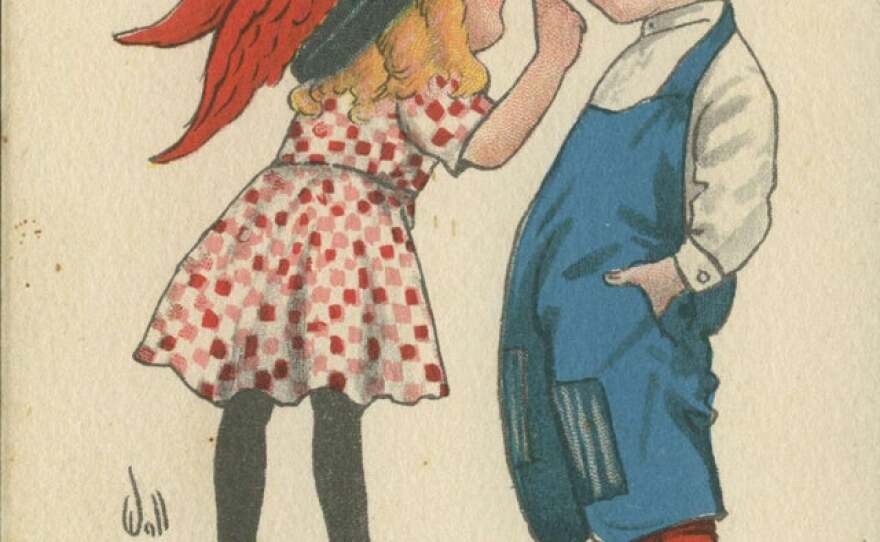This year marks a century since the adoption of the 19th Amendment to the Constitution of the United States. Winning women the right to vote, however, was an effort launched decades before it was passed, with national and local campaigns securing small victories that led to final ratification in 1920.
Anne Hoiberg, president of the Women’s Museum of California in Liberty Station, has spent her career focusing on women’s issues. To honor the 100th anniversary of the 19th Amendment, the museum has a permanent exhibit, “Marching Toward Empowerment,” which features clothes, postcards, buttons, and political signs, used in local, state, and national suffrage campaigns.

Hoiberg believes a poem written by an anonymous suffragist more than 100 years ago sums up the cause perfectly: “For the long work day, for the taxes we pay, for the laws we obey, we want something to say.”
But who were these trailblazers fighting for women’s right to vote and, more specifically, how did San Diegans play a part?
In 1895, Susan B. Anthony, the famous leader of the national suffrage movement, paid a visit to San Diego.
“And the town was so excited, the famous Susan B. Anthony. She spoke at the Methodist church - standing room only,” Hoiberg explained.
Determined that California women would win the right to vote, in 1896 Anthony led the first local campaign. The amendment narrowly passed in San Diego but failed in the state of California. At the time, women were considered to be morally superior to men, and men were thought to be intellectually superior to women. There was a fear of what steps women would take in society should they be able to vote, particularly on the issue of prohibition; women’s suffrage could hurt the liquor industry.
It wasn’t until 15 years later, in 1911, that women would seize another opportunity, this time led by Point Loma resident Dr. Charlotte Baker. She was the first woman president of the San Diego County Medical Society and became president of the San Diego Equal Suffrage Association.
“She would deliver a baby in the morning, and then the afternoon she would dedicate to civic duties,” Hoiberg said. “She led a cadre of determined women.”
For this second local movement, suffragists got organized. With support from other prominent women like Flora Kimball of National City, Ellen Browning Scripps, and attorney Clara Shortridge Foltz, the local suffragists used a three-pronged strategy they believed was sure to work. For starters, instead of protest, the women used the power of persuasion.
“These women would go into a man's home and they would sit with that man and talk about the importance of women getting the right to vote. And they wouldn't leave until they convinced him,” Hoiberg said. “They even said they were conducting invasions, invasions of men's homes to persuade them to vote for women getting the right to vote.”
The women took advantage of the times. The California Exposition was coming to San Diego in 1915 and Balboa Park was having a groundbreaking ceremony in July 1911. For their second strategy, the suffragists would parade. They decorated a parade float with yellow ribbons, promoting their clear message of equality.
“And they called it the Modern Boston Tea Party float and it also had on there ‘taxation without representation is tyranny now, as it was in 1773’,” Hoiberg said.
For the most part, San Diego County was still a rural town in 1911. Agriculture was highly dependent on the labor of women. The suffragists knew they had to reach the outlying communities by using their third strategy: automobile campaigning. On a Monday morning, four suffragists climbed into a decorated touring car and drove north to Oceanside.
“It probably took them several hours to get there. The roads were probably rutted, dusty, dirty,” Hoiberg said. From there they drove to speak to men in Escondido, then to Fallbrook, and finally to Ramona.
“Can you imagine? It took three days to cover our county and it was highly successful,” said Hoiberg.
Clara Shortridge Foltz, San Diego’s first female attorney, wrote the California Voter’s Rights Amendment that appeared on the ballot on October 10, 1911.
“The suffragists in San Diego were quite worried,” said Hoiberg. “Was it going to go down to defeat like it did in 1896 or would it be successful? Dr. Baker stayed up until 2 o’clock worried about how things were going to turn out.”
Reports from the more industrialized city of San Francisco were discouraging. In her diary, Baker wrote, “Between five and six bad reports from San Francisco made us feel blue. But cannot give up hope.”
The final statewide vote was close with a margin of less than 1.5%. In San Diego, the margin was wider, with more than 57% of men voting ‘yes’ granting women the right to vote. Baker received a message from the city clerk telling her to come and register to vote.

“The issue of why the race was so close is something that I just don't understand,” Hoiberg said. “When you think of the determination of those suffragists in going into men's homes and persuading them, it just seems unbelievable that the numbers weren't higher. Why didn't more men vote for women getting the right to vote?”
But the votes were high enough and California became the 6th state in the country to give women the right to vote, all of which were Western states.
“Now, how do you explain that?” asked Hoiberg. “But I do think it has to do with the sense of equality between men and women. The pioneer spirit, the progressiveness of people who would venture from the East coast to come out here. To me, that's fascinating.”
“Our suffragists here in San Diego had three suffrage movements: 1896, 1911, and then 1919,” Hoiberg said. American women in every state won the right to vote when the 19th Amendment was ratified on August 26, 1920.







